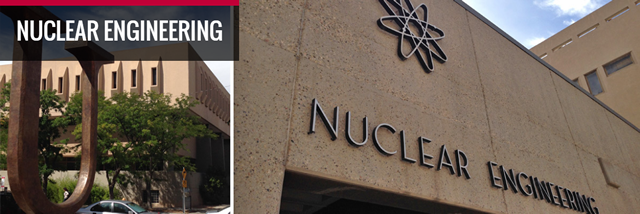
Nuclear Engineering ETDs
Publication Date
8-27-2009
Abstract
The simulation of electrons, protons, and other charged particles can be an expensive computation. On the one hand, the small mean free path of a charged particle makes direct simulations very costly. On the other hand, the cross sections are very singular making a deterministic calculation difficult to impossible. Nevertheless, the accurate computation of high energy charged particle densities is an important task for many engineering calculations. In this thesis, a variety of methods for computing these densities and distributions are assessed. Among these methods are the well-known Fokker-Planck and Fermi approximations. These methods are known to be particularly bad for electrons. It is shown in this thesis that they are in fact very poor for all charged particle transport. Specifically, it will be seen that the Fokker-Planck method and the Fermi approximation that can be derived from it allow for higher order spatial and angular modes to creep into the solutions for shallow and deep penetrations alike. On the other hand, the true physics only requires a few modes at deeper penetrations. Also, for shallow penetrations, most of the modes of the actual solution to the transport equation are incorrectly approximated by the Fokker-Planck approximation. It has been realized in recent years that the Fokker-Planck approximation is simply a leading order term in an asymptotic approximation. This realization with some clever manipulation of mathematical operators allows one to obtain higher order approximations to the scattering operator. The Fokker-Planck operator is then simply a specific case of this general framework. This general framework is explained in great detail. The inability of these higher order approximations to capture the true physics in some situations is assessed. Finally, hybrid methods will be introduced with parallels made to the well known Boltzmann Fokker-Planck approximation. It is seen that the higher order approximations used in place of the Fokker-Planck approximation can make the method more robust, more accurate, and more efficient. Also, parallels between the hybrid methodology and naturally occuring physics that is associated with very heavy ions incident on light targets will be seen. A general framework for approximating the solutions to these types of equations by using a lab frame analysis of the relevant physics will be introduced.
Sponsors
New Mexico Space Grant Consortium
Document Type
Thesis
Language
English
Degree Name
Nuclear Engineering
Level of Degree
Masters
Department Name
Nuclear Engineering
First Committee Member (Chair)
Ueki, Taro
Second Committee Member
Hecht, Adam
Recommended Citation
Smith, Paul. "Analysis of moment-preserving methods for charged particle transport." (2009). https://digitalrepository.unm.edu/ne_etds/47


